There are many ways to make money on Wall Street. One of the best proven strategies is buying and holding dividend stocks for long-term wealth creation.
Countless studies prove the superiority of income-generating stocks. The asset managers at Hartford Funds looked at the performance of the benchmark S&P 500 going back to 1930. They found that although there were periods when the index produced negative returns, dividend stocks always produced positive returns. That was backed by JPMorgan‘s asset management division which found stocks that initiated and then raised their payouts over the 40 years between 1972 and 2012 returned an average of 9.5% annually, compared to just 1.6% non-dividend-paying stocks.
Mind you these results were across periods when there were recessions, depressions, world wars, global pandemics, and geopolitical events that crippled nations. Dividend stocks always shined.
If you think the U.S.’s third-quarter economic expansion was the high-water mark, what follows are seven dividend stocks for a market crash that will protect your portfolio.
AbbVie (ABBV)
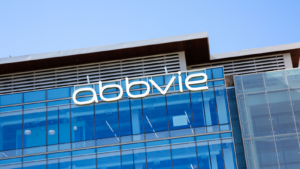
It doesn’t look like AbbVie (NYSE:ABBV) would be a good choice for surviving a market crash. The pharmaceutical is down 14% year-to-date versus a 15% gain in the S&P 500. That’s because its lead drug Humira lost patent protection at the start of the year and generics and biosimilars have eaten away at sales. U.S. revenue for the arthritis treatment of $16 billion over the first nine months of 2023 is down 11% from last year.
Yet AbbVie has about a dozen other drugs that generate over $1 billion annually along with a strong pipeline of therapies that should come to market eventually. It’s also looking to extend existing treatments into new indications. All of these drugs keep the pharma quite profitable.
The market is offering AbbVie at a tremendous discount. The stock trades at 12 times next year’s earnings and a bargain-based 10x free cash flow (FCF). This Dividend King offers a 4.2% yield and will be solid for your portfolio over the long haul no matter what the market throws at it.
Bank of America (BAC)
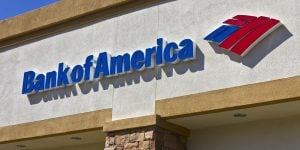
Bank of America (NYSE:BAC) also gives the impression it’s not suitable as a buffer against a market crash. Shares of the banking giant are down 16% this year after the financial markets buckled under a number of high-profile crashes. Regulators seized Signature Bank (OTCMKTS:SBNY), Silicon Valley Bank, and First Republic Bank (OTCMKTS:FRCB). The Federal Reserve’s interest rate policies also hurt the bank more than its peers because Bank of America purchased long-term, low-yield assets during the pandemic. It is more sensitive to the high-interest rate environment we’re in.
The bank’s net interest income (NII) is pressured as a result but says the fourth quarter will be the tough period before it turns and rises next year. As the second largest U.S. bank by assets, Bank of America is still a secure institution not at risk of collapse. Its dividend is also safe and yields a healthy 3.3% annually.
Warren Buffett also loves Bank of America. He sold out of most of his financial stocks during the banking turbulence, but held tightly onto the more than one billion BAC shares he owns. He told shareholders, “we do remain with one bank…I like Bank of America and I like the management.” Investors may want to ride with Buffett on this beaten-down financial institution.
Costco (COST)

Even if AbbVie and Bank of America are rock-solid long-term investments, investors will appreciate Costco (NASDAQ:COST) showing superior gains in 2023. The stock is up 26% so far and will offer downside protection if the market crashes. It’s not recession-proof, but it is resistant. It relies upon high-volume,low-margin sales that can be compressed when interest rates rise.
Still, because Costco’s customer base tends to be more upscale it will decline more slowly and for shorter periods than its rivals. The typical customer at the third-largest U.S. retailer earns around $125,000 a year compared to about $80,000 at Walmart (NYSE:WMT).
According to the location data analysts at Placer.ai, Costco is the only retailer amongst superstores and warehouse clubs to show increased foot traffic every quarter of 2023. They may be cutting back on pricier purchases when in the store, but they’re coming back often.
Cotsco’s dividend isn’t going to wow you with its 0.7% yield, but it’s a consistently paid one for the past decade. Costco has also raised it every single year and paid a special $10 per share dividend during the pandemic.
LVMH Moet Hennessy Louis Vuitton (LVMUY)

Luxury retailer LVMH Moet Hennessy Louis Vuitton (OTCMKTS:LVMUY) also has the same sort of resistance to collapsing during economic pressure. Straddling the fence of accessible luxury and super-premium brands, the fashion house is considered a core premium brand. It owns 75 “houses” featuring 60 different brands including Dior, Fendi, Bvlgari, Louis Vuitton, and more. High-end wine and spirits brands include Dom Perignon, Moet & Chandon, and Hennessy.
LVMH’s customer base is the top 5% of uber-luxury spenders. They represent 40% of global luxury sales. And even if domestic sales are slowing as economic concerns rise, they’re growing internationally as tourism remains robust in Europe. Luxury market sales are expect to grow 10% this year, according to a Bain & Co. survey.
The well-heeled retailer offers protection because of its diversification across geographies and brands. It offers clothes, accessories, jewelry, and drinks. All are subject to different variables that affect them at different times. LVMH did cut its dividend during the pandemic to conserve costs as virtually all retail was shut down but has resumed its policy of increasing the payout. Earlier this year it raised the dividend 20% to 12 euro per share.
Altria (MO)
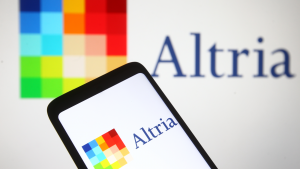
Even if cigarette smoking is in a secular decline, Altria (NYSE:MO) deserves a spot in your portfolio for when the market crashes. Tobacco tends to be enormously resistant to economic downturns when companies like Altria are still able to raise prices.
The addictive nature of nicotine keeps smokers coming back despite rising prices. However, Altria and the rest of the industry are pursuing safer alternatives for users. Vaping, electronic cigarettes, nicotine lozenges and pouches, and more could provide more sales, profits, and opportunities in the future.
The tobacco giant’s Marlboro brand commands the largest slice of the market with a 42.3% share. In the premium market, it has a 58.9% share. Altria recently completed its acquisition of NJOY, the country’s third-largest e-cig manufacturer. It intends to focus on accelerating NJOY’s growth by distributing it to 70,000 stores by the end of the year.
British American Tobacco‘s (NYSE:BTI) Vuse brand is the leading e-cig with a 41.5% share. Runner-up Juul, which Altria finally disassociated itself from, has a 24.7% share. NJOY is far behind in third with a 2.6% share. Expect that to grow, however, as it steals market share from its rivals due to Altria’s marketing muscle.
The tobacco stock’s dividend yields 9.6% annually and trades at a deeply discounted 8x FCF.
PPG Industries (PPG)
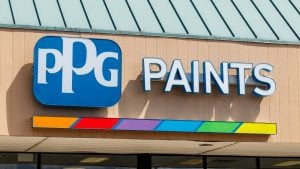
When looking for dividend stocks to survive a market crash, longevity and stability are paramount. Investors get that in spades with paint and coatings specialist PPG Industries (NYSE:PPG). Founded in 1883, PPG began making dividend payments in 1899 and hasn’t stopped. It became a Dividend King in 2021 when it raised the payout for the 50th consecutive year. The dividend yields a respectable 2% annually.
Its history shows PPG knows a thing or two about thriving in market turmoil. As one of the largest players in the industry with Sherwin-Williams (NYSE:SHW) and Akzo Nobel (OTCMKTS:AKZOY), it tends to grow regardless of conditions. During booms, paint and coatings are needed for new homes and office space. During downturns, consumers find paint to be a cost-effective way to freshen a space.
PPG’s stock is up 2% this year, but 12% higher over the past 12 months. It trades at a reasonable 15 times earnings estimates and 19x FCF. That means you’re not buying at a discount, but you’re getting a consistent performer for decades to come.
T-Mobile (TMUS)
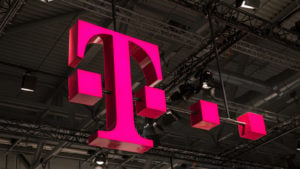
Telecom giant T-Mobile (NASDAQ:TMUS) is last on the list of market crash stocks to own, though it shouldn’t necessarily be at the bottom of stocks to buy. Wall Street forecasts the sixth-largest global telecom will grow earnings at an eye-popping 67% a year for the next five years. In comparison, earnings at AT&T (NYSE:T) and Verizon (NYSE:VZ) will be essentially flat and no one in the industry is expected to grow faster.
T-Mobile surpassed Verizon in the third quarter to become the biggest prepaid carrier. It had 21.6 million customers compared to its rival’s 21.4 million (Ma Bell had 19.4 million). With its pending acquisitions of Mint Mobile and Ultra Mobile, T-Mobile may be padding that lead shortly.
The reason behind its growth is superior quality of service. A new survey by Ookla found the telecom had the fastest download and upload speeds, lowest latency, and best consistency. It also beat Verizon and AT&T (and everyone else) in every other category surveyed too.
With a yield of just 0.4% annually, T-Mobile’s dividend is not winning any awards, but for the safety and strength of the business, investors should not hang up on the telecom.
On the date of publication, Rich Duprey held a LONG position in ABBV, MO, PPG, and T stock. The opinions expressed in this article are those of the writer, subject to the InvestorPlace.com Publishing Guidelines.
